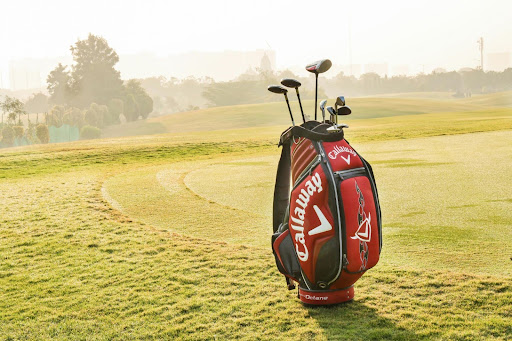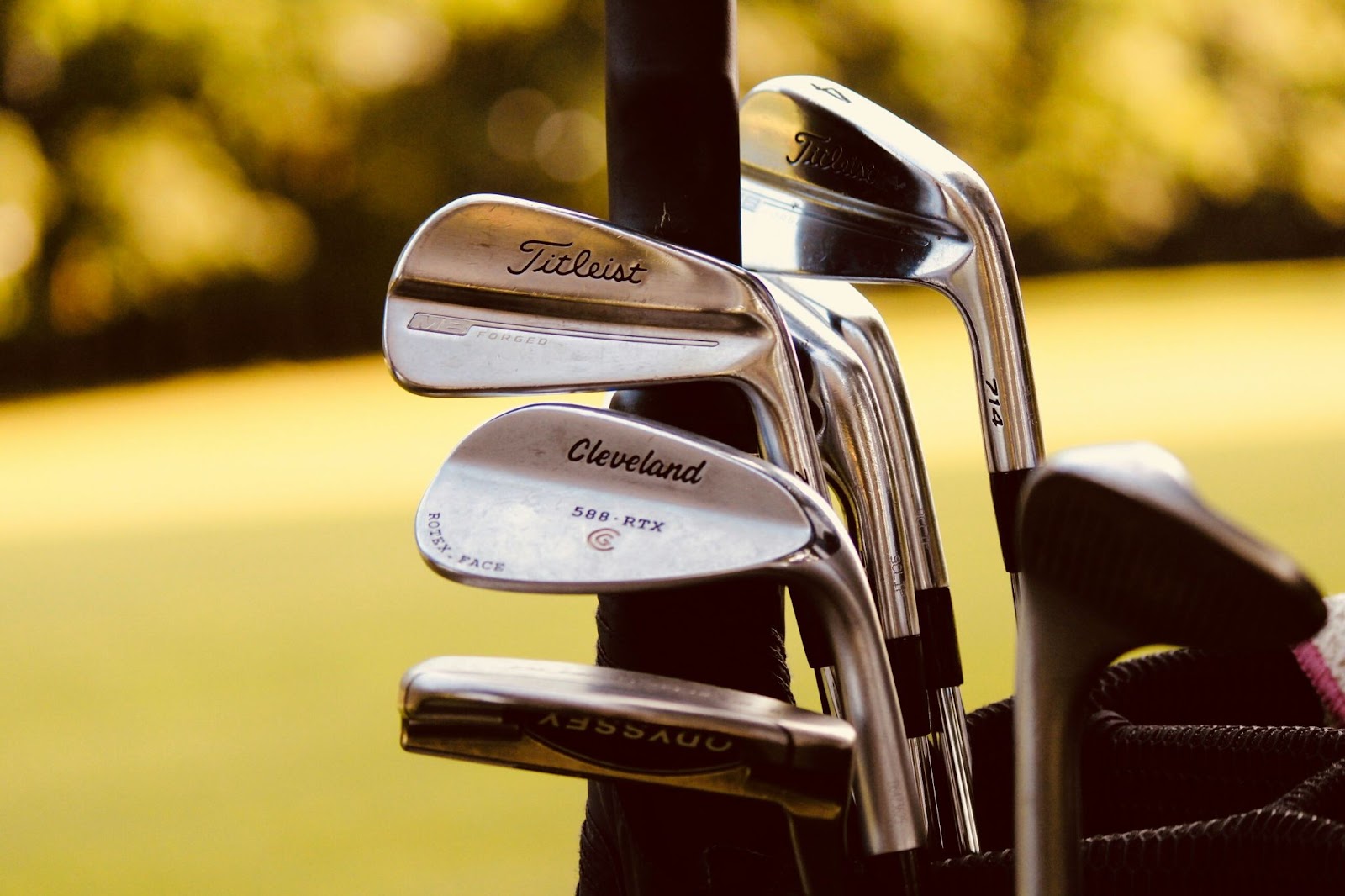Preparing Your Golf Equipment For International Travel: Tips And Tricks
According to recent statistics, international golf tourism saw a significant rise in both 2022 and 2023, with more golfers taking their clubs abroad to explore new courses and participate in tournaments. This trend is expected to continue growing in 2024, highlighting the importance of knowing how to travel with your golf equipment efficiently.
Author:Michael RachalReviewer:Finn WildeMay 27, 2024709 Shares177.1K Views

According to recent statistics, international golf tourism saw a significant rise in both 2022 and 2023, with more golfers taking their clubs abroad to explore new courses and participate in tournaments. This trend is expected to continue growing in 2024, highlighting the importance of knowing how to travelwith your golf equipment efficiently.
Choosing The Right Golf Travel Bag
When it comes to traveling to golfing getawaysand choosing a golf travel bag, there are two primary options: hard cases and soft cases. Each has its own set of pros and cons that you should consider based on your travel needs and preferences.
Hard Cases
Pros: Offer maximum protection for your clubs, often required by airlines to cover any damages. They are durable and provide the best security against impact.
Cons: Typically more expensive, heavier, and less flexible for fitting into small spaces.
Soft Cases
Pros: More affordable, lighter, and easier to maneuver. They usually come with wheels for easy transport and additional space for storing other items.
Cons: Offer less protection compared to hard cases and may require additional padding to ensure the safety of your clubs.
Features To Look For
- Padding: Ensure the bag has adequate padding to protect your clubs.
- Durability: Look for high-quality materials that can withstand the rigors of travel.
- Wheels: For ease of transport through airports and other travel environments.
- Storage: Extra pockets and compartments for accessories and clothing.
Top-Rated Golf Travel Bags
CaddyDaddy Enforcer: A hard case with a hard ABS molded top, providing excellent protection while being lighter than many other hard cases.
Himal Outdoors Soft-Sided Golf Travel Bag: Known for its sturdy frame and ample padding, making it a reliable choice for those who prefer a soft bag.
Packing Your Golf Clubs
Properly packing your golf clubs is essential to prevent damage during transit when flying. Here are some tips to ensure your clubs are well-protected:
- Remove Club Heads: For adjustable clubs, remove the heads and store them separately to reduce the risk of bending or breaking.
- Prevent Movement: Cover the irons and wedges with socks and weave a towel through the clubs to minimize movement. Use bubble wrap or packing materials to fill empty spaces and prevent the clubs from rubbing against each other.
- Use a Stiff Arm or Broom Handle: Place a stiff arm or a broom handle inside the bag to absorb impact if the bag is dropped headfirst.
- Additional Padding: Fill the extra space in the bag with clothes or towels to provide additional cushioning for the clubs.
- Label Your Bag: Clearly label your bag with your contact information to ensure it can be returned to you if lost. Additionally, use a brightly colored tag or ribbon to make it easily identifiable.
Traveling With Golf Balls And Accessories
Packing Golf Balls: Quantity And Weight Considerations
Typically, golf balls are dense and can add significant weight to your luggage. A dozen golf balls weigh about 1.5 pounds (0.68 kg), so be mindful of how many you pack to avoid extra baggage fees.
Tips
- Limit Quantity: Only pack the number of balls you realistically expect to use, considering the length of your trip and the number of rounds you plan to play.
- Distribute Weight: Spread the golf balls across your luggage to balance the weight and prevent a single bag from becoming too heavy.
- Use Original Packaging: Keeping the balls in their original boxes can help protect them during transit.
Storing Tees, Gloves, And Other Small Accessories
Small accessories like tees, gloves, ball markers, and divot repair tools are easy to misplace. Proper organization ensures that these items are accessible when you need them.
Tips
- Use a Small Pouch: Store small items in a dedicated pouch or ziplock bag to keep them organized and easily accessible within your golf bag or carry-on.
- Separate Compartments: Utilize separate compartments in your golf bag for different accessories to avoid rummaging through your bag.
- Check Inventory: Before packing, ensure you have enough of each item, especially gloves, which can wear out quickly.
Ensuring Accessibility Of Essential Items
Certain essential items, such as rangefinders, GPS devices, and valuable personal belongings, should be easily accessible and preferably kept in your carry-on luggage to avoid loss or damage.
Tips
- Carry-On Storage: Keep valuable and essential items in your carry-on to ensure they are protected and within reach during your flight.
- Organize Efficiently: Use the pockets of your carry-on bag to keep these items organized and accessible.
- Protect Devices: Use protective cases for electronic devices to prevent damage.
Handling Golf Shoes
Packing Tips For Golf Shoes To Prevent Damage
Golf shoes are an essential part of your gear, and proper packing ensures they remain in good condition.
Tips
- Use Shoe Bags: Pack your golf shoes in dedicated shoe bags to protect them from dirt and damage. Many golf travel bags have built-in compartments for shoes.
- Stuff Shoes: Place socks or other soft items inside the shoes to help them maintain their shape during transit.
- Separate Shoes: Keep your golf shoes separate from your clothes to avoid transferring dirt or grass.
Recommendations For Shoe Bags And Compartments
Investing in a good shoe bag or using the compartments in your golf travel bag can provide additional protection for your shoes.
Recommendations
- Dedicated Shoe Bags: Products like the Callaway Golf Shoe Bag or the Athletico Golf Shoe Travel Bag are popular options that offer protection and ventilation.
- Built-In Compartments: Many golf travel bags come with built-in shoe compartments that provide convenience and protection.
Dealing With Airline Policies And Regulations
Different airlines have varying policies regarding the transportation of golf equipment. It's crucial to familiarize yourself with these policies to avoid any surprises at the airport.
Photo by Andrea Piacquadio: https://www.pexels.com/photo/man-in-brown-robe-carrying-bag-smiling-837129/
Common Policies
- Checked Baggage: Most airlines allow golf bags as part of checked baggage, but they must adhere to specific weight and size limits.
- Additional Fees: Some airlines charge extra fees for transporting sports equipment, so it's essential to check the fee structure beforehand.
Tips For Checking In And Carrying On Golf Equipment
Checking In
- Arrive Early: Arrive at the airport early to allow extra time for checking in oversized baggage.
- Use a Hard Case: Many airlines prefer or require a hard case for golf equipment to ensure adequate protection during transit.
- Declare Equipment: Inform the check-in staff that you are traveling with golf equipment to ensure it is handled properly.
Carrying On
- Valuables in Carry-On: Keep valuable items like rangefinders, GPS devices, and personal belongings in your carry-on bag.
- Follow TSA Guidelines: Adhere to TSA guidelines for carrying liquids and electronic devices to avoid delays during security checks.
Avoiding Extra Fees And Ensuring Compliance With Regulations
Avoiding Extra Fees
- Check Weight Limits: Ensure your golf bag does not exceed the airline's weight limits to avoid additional charges.
- Pre-Pay Fees: Some airlines offer the option to pre-pay for sports equipment fees at a discounted rate, so take advantage of this if available.
Ensuring Compliance
- Read Policies: Carefully read the airline's baggage policies related to sports equipment on their website.
- Contact the Airline: If in doubt, contact the airline directly for clarification on their policies and any additional requirements.
In the realm of international golf tourism, adeptly managing golf equipment during travel is paramount. Selecting appropriate travel bags, packing clubs carefully, and adhering to airline policies, can ensure golfers a seamless journey. Mastering these strategies allows enthusiasts to embark on international golf adventures with confidence and anticipation.

Michael Rachal
Author
Michael Rachal believes that luxury lies in the details. With over 20 years of experience in the luxury travel industry, he has crafted hundreds of bespoke itineraries for clients seeking personalized, unforgettable experiences.
Whether guiding clients through private cultural tours or curating culinary journeys with world-renowned chefs, Michael ensures that each trip is tailored to perfection.
His ability to anticipate needs and exceed expectations has earned him a reputation as a leading expert in luxury travel.

Finn Wilde
Reviewer
For Finn Wilde, the wilderness is more than just a destination - it’s a way of life. Over the past decade, he has led multiple expeditions in some of the world’s most remote regions, from the icy fjords of Greenland to the rugged trails of Patagonia.
Finn emphasizes sustainability in all of his adventures, helping participants connect with nature while promoting responsible exploration. His expeditions inspire individuals to explore the great outdoors while fostering a deep respect for the environment.
Latest Articles
Popular Articles



